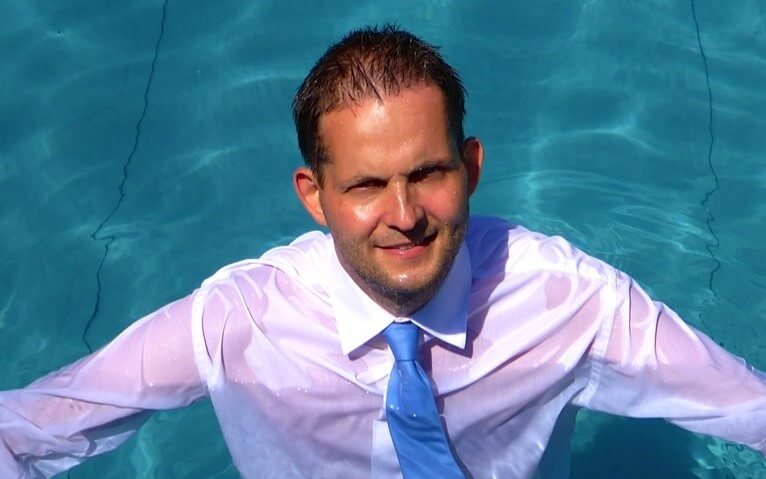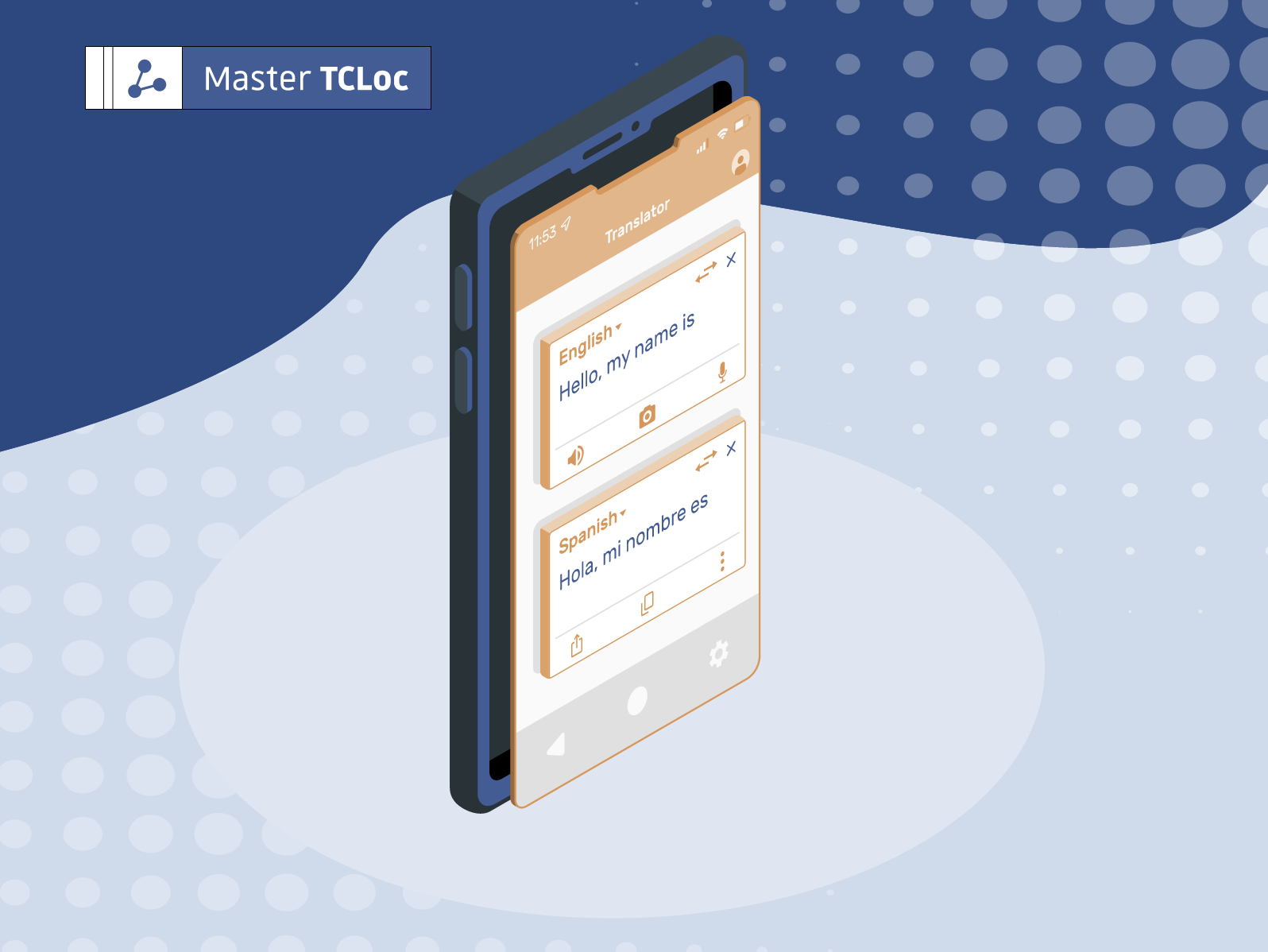Every language professional can attest to the fact that their industry is becoming more technical by the day: an evolution that may worry some but is a powerful motivator for others. Firmly seated in the latter group, Six Continents CEO and TCLoc instructor Gaëtan Chrétiennot epitomizes the intersection between linguistics and IT in today’s language services industry.
From 1997 until just last year, Gaëtan was co-owner of the Alsace-based language service provider A Propos Langues. A Propos recently split into two companies, one rebranding itself as Six Continents, with Gaëtan as CEO. He has also worked for SDL Trados for several years and is a regular speaker at SDL roadshows, as well as a certified SDL trainer and consultant.
For a long time, Gaëtan’s bread and butter have been CAT tools, and he often shares his passion and expertise with both established and aspiring language professionals. In fact, for several years, he has been an instructor for the CAWEB and TCLoc master’s programs at the University of Strasbourg, training students to master a variety of CAT tools, including Trados Studio, Kilgray memoQ, Memsource, and MateCat.
We were happy to connect with Gaëtan this summer to ask him a few questions about his interdisciplinary approach to the language industry and his thoughts on current and future developments in the business.
TCLoc: Have you always had a dual interest in languages and technology?
Gaëtan Chrétiennot: I was interested in computers since I was very young. At age 13, I wrote a software program to calculate salary sheets, and actually earned my first salary that way. I also did some programming for my high school, creating computer evaluation tests for English classes. But I also always loved languages, and so I opted for an undergraduate degree in Applied Foreign Languages (LEA) at the University of Strasbourg, followed by professional translation studies. It was clear to me from early on that language and technological skills were complementary and that having a background in both fields was very important for building the career I wanted.
How would you characterize your business and the services it offers?
Six Continents is a boutique language service provider (LSP) and we offer a large number of language services including translation, localization, post-edition, proofreading, multilingual DTP, and transcreation. We have a very experienced team of vendors, translators, project managers, and reviewers and we are always up to date with the latest and most effective technological developments on the market.
Success for us is all about trust and communication among the agency members, the freelancers, and the customers. We like to work together closely and help each other without a necessary legal commitment. The idea is to build sustainable relationships and position ourselves as a valued language partner. When we contact our freelancers, we are selecting people we know, that we have steady contact with and that we feel connected to.
Is there a story behind your company name?
When I created the company name, it was important to me that it not contain the words “languages” or “translation”, but that it still somehow evoke the industry we work in. The name “Six Continents” brings together people and languages from all the continents, and a plus is that it works in both French and English.
There is also a debate about how many continents there are in the world. Whether you see Europe and Asia as separate continents or the Americas as a single continent depends on your culture and worldview. This is the issue we address at our agency: we don’t translate words for words, but rather address concepts and morph messages so that they are compatible with the culture on the receiving end. If you want someone to get a message, it’s very important to consider who will read it, where, and from what perspective.
As someone who has been in the business for over 20 years, what kinds of changes have you noticed lately?
The whole translation business is shifting. It’s getting more and more technical every day. If you want to be successful, it’s very important to master a diversity of IT tools. Translation environment tools (TEnTs) are a basic requirement, but you also need to have a handle on project management tools, which are often deeply interconnected with the CAT tools.
Three of the main challenges of today’s industry are automation, interoperability and speed. Companies who cannot handle different file formats and content intended for many different media platforms end up not getting enough work. Also, companies like ours who work with a growing number of clients on many continents have to learn to manage different time zones and everything has to move faster. The more automation in the project management workflow, the better, since any time saved here means additional time spent on achieving better quality.
On the subject of automation, what role do you see machine translation (MT) playing in the industry’s future?
I’ve been working with MT for some time, because it can be helpful for certain projects. The standard model used to be human translation aided by computers (CAT), but we are now moving towards machine translation aided by humans, which, for certain types of content, can deliver near-human-quality translations.
SDL, for example, has introduced an adaptive neural translation engine that has proved quite effective. The standard statistical model requires you to spend large amounts of time training your engine yourself. With an adaptive MT you do the opposite: you start with nothing, but whatever you add or change affects the outcome of the engine.
New innovative and powerful ways to use MT keep coming up. For example, some TEnTs can integrate MT and use it as an autosuggest tool to help human translators type faster. Another technique being explored is using MT to “repair” fuzzy, or partial, translation memory matches. All these new techniques are being tested and we are definitely in a transition phase; nobody can say they have the best way, we just have to keep testing and talking, sharing problems or solutions with each other. That’s how the industry will progress with this new technology.
It’s also important to consider your company needs before launching into MT. There’s no point in spending thousands of euros on it if it’s not going to benefit you in the long run. It has to be of interest to everyone: translators getting paid more by the hour because they work faster and customers consequently paying less. When you split the productivity gain with everyone involved in the project, everybody should win.
Do you think new translators today are prepared for the realities of this changing industry?
Unfortunately, in France at least, university-level training for translation tools can be quite poor, placing hardly any focus on the technological side of things. The realities of the language industry can come as a shock to new translators, who are expected to know how to work with a variety of tools on a daily basis. When we get interns, they are often completely lost, and we need to spend a lot of time training them.
Bridging this gap between languages and technology is what I think is necessary today. Programs like CAWEB and TCLoc are good at addressing this need. This year’s TCLoc students all play different roles in the industry, some are translators, some run translation agencies, some are even outside of the industry. I am trying to provide them with a broader look at what’s out there, all the different tools, cloud-based or otherwise, the reasons and ways to outsource workflow, etc. A good overview, without even diving too deep into the technology, is already a good start for figuring out which options they should explore further.
Anyone working with multilingual content, either creating or delegating the work, needs to know how the industry functions.




Comments